solr的索引庫配置
schema.xml的索引庫的搜索域的配置。
其中field的基本屬性配置。
fieldType:可以自己定義type的類型,比如中文的分詞器IKAnalyzer
field域:主要是用于數(shù)據(jù)存取的域,里面使用key,value存儲(chǔ)數(shù)據(jù)。
name:類似于key,存儲(chǔ)的文本名稱
type:存儲(chǔ)的數(shù)據(jù)類型
indexed:是否建立索引,也就是說能不能使用該域進(jìn)行搜索查找。
stored:是否存儲(chǔ)數(shù)據(jù),一般對(duì)象的基本屬性是存儲(chǔ)的
multiValued:可以是多個(gè)值,和數(shù)組基本類似,格式[]
copyField:復(fù)制域,主要是將指定的數(shù)據(jù)復(fù)制到某一個(gè)域?qū)ο笾校灾劣谝粋€(gè)域可以存儲(chǔ)多個(gè)域的信息,這樣就方便構(gòu)建默認(rèn)搜索域就行搜索,非常的方便。
dynamicField:動(dòng)態(tài)域,可以使用通配符*,進(jìn)行存儲(chǔ)數(shù)據(jù)和索取數(shù)據(jù)。
其中每一個(gè)向solr添加的對(duì)象都需要一個(gè)唯一的id,這樣可以保證每一份數(shù)據(jù)的唯一性
《field name=“id” type=“string” indexed=“true” stored=“true” required=“true” multiValued=“false” /》
《fieldType name=“text_ik” class=“solr.TextField”》
《analyzer class=“org.wltea.analyzer.lucene.IKAnalyzer”/》
《/fieldType》
《field name=“user_username” type=“text_ik” indexed=“true” stored=“true”/》
《field name=“user_age” type=“text_ik” indexed=“true” stored=“true”/》
《field name=“user_address” type=“text_ik” indexed=“true” stored=“true”/》
《field name=“user_keywords” type=“text_ik” indexed=“true” stored=“false” multiValued=“true”/》
《copyField source=“user_age” dest=“user_keywords”/》
《copyField source=“user_username” dest=“user_keywords”/》
《copyField source=“user_address” dest=“user_keywords”/》
《dynamicField name=“*_i” type=“int” indexed=“true” stored=“true”/》
Solr索引庫(collection1,2.。)的使用
Solr服務(wù)搭建
所需資料
第一步:把solr 的壓縮包上傳到Linux系統(tǒng)
第二步:解壓solr。
第三步:安裝Tomcat,解壓縮即可。
第四步:把solr.war部署到Tomcat下的webapp目錄下。
第五步:啟動(dòng)Tomcat解壓。
第六步:把/root/solr-4.10.3/example/lib/ext目錄下的所有的jar包,添加到solr工程中。
第七步:創(chuàng)建一個(gè)solrhome。/example/solr目錄就是一個(gè)solrhome。復(fù)制此目錄到/usr/local/solr/solrhome
第八步:關(guān)聯(lián)solr及solrhome。需要修改solr工程的web.xml文件。并將注釋取消
第九步:啟動(dòng)Tomcat,訪問http://127.0.0.1:8080/solr/
配置業(yè)務(wù)域
第一步:把中文分析器添加到工程中。
1、把IKAnalyzer2012FF_u1.jar添加到solr工程的lib目錄下
2、把擴(kuò)展詞典、配置文件放到solr工程的WEB-INF/classes目錄下。
第二步:配置一個(gè)FieldType,制定使用IKAnalyzer
修改Solr的schema.xml文件,添加FieldType:
《fieldType name=“text_ik” class=“solr.TextField”》
《analyzer class=“org.wltea.analyzer.lucene.IKAnalyzer”/》
《/fieldType》
第三步:配置業(yè)務(wù)域,type制定使用自定義的FieldType。
設(shè)置業(yè)務(wù)系統(tǒng)Field,不同的系統(tǒng)所需要的字段不同;經(jīng)過分析本系統(tǒng)需要商品Id,商品標(biāo)題,商品賣點(diǎn),商品價(jià)格,商品圖片,分類名稱字段
《field name=“item_title” type=“text_ik”(使用中文編輯器) indexed=“true” stored=“true”/》
《field name=“item_sell_point” type=“text_ik” indexed=“true” stored=“true”/》
《field name=“item_price” type=“l(fā)ong” indexed=“true” stored=“true”/》
《field name=“item_image” type=“string” indexed=“false” stored=“true” /》
《field name=“item_category_name” type=“string” indexed=“true” stored=“true” /》
《field name=“item_keywords” type=“text_ik” indexed=“true” stored=“false” multiValued=“true”/》 // 將下面的3個(gè)字段復(fù)制到keyword字段
《copyField source=“item_title” dest=“item_keywords”/》
《copyField source=“item_sell_point” dest=“item_keywords”/》
《copyField source=“item_category_name” dest=“item_keywords”/》
示例:實(shí)現(xiàn)更新商品索引的方法
Service層
@Service
@Transactional
public class SearchItemServiceImpl implements SearchItemService {
@Autowired
private ItemMapper itemMapper;
@Autowired
private SolrServer solrServer;
@Override
public E3Result importItems() {
try {
// 1.查詢到所有商品列表
List《SearchResult》 list = itemMapper.selectAllItem();
// 2.導(dǎo)入索引庫中
for (SearchResult searchResult: list) {
// 創(chuàng)建文檔對(duì)象
SolrInputDocument document = new SolrInputDocument();
// 向文檔對(duì)象中添加域
document.addField(“id”,searchResult.getId());
document.addField(“item_title”,searchResult.getTitle());
document.addField(“item_sell_point”,searchResult.getSell_point());
document.addField(“item_price”,searchResult.getPrice());
document.addField(“item_image”,searchResult.getImage());
document.addField(“item_category_name”,searchResult.getCategory_name());
// 將文檔添加到索引庫中
solrServer.add(document);
}
// 3.提交
solrServer.commit();
return E3Result.ok();
} catch (Exception ex){
ex.printStackTrace();
return E3Result.build(500,“建立商品索引時(shí)失敗”);
}
}
}
Controller層
@Controller
public class SearchContriller {
@Autowired
private SearchItemService searchItemService;
@RequestMapping(“/index/item/import”)
@ResponseBody
public E3Result impotItemIndex() {
return searchItemService.importItems();
}
}
示例:實(shí)現(xiàn)搜索功能(非項(xiàng)目整合版)
@Test
public void queryDocument() throws Exception {
// 1.創(chuàng)建一個(gè)SolrServer對(duì)象
SolrServer solrServer = new HttpSolrServer(“http://127.0.0.1:8080/solr”);
// 2.創(chuàng)建一個(gè)查詢對(duì)象,可以參考solr的后臺(tái)的查詢功能設(shè)置條件
SolrQuery query = new SolrQuery();
// 3.設(shè)置查詢條件
// 1)設(shè)置查詢字段的2中方法
//query.setQuery(“手機(jī)”);
query.set(“q”,“手機(jī)”);
// 2)設(shè)置分頁條件,從第幾條開始,取幾條數(shù)據(jù)
query.setStart(1);
query.setRows(2);
// 3)開啟高亮
query.setHighlight(true);
// 4)設(shè)置那個(gè)字段高亮顯示
query.addHighlightField(“item_title”);
// 5)設(shè)置高亮字段的頭尾
query.setHighlightSimplePre(“《em》”);
query.setHighlightSimplePost(“《/em》”);
// 4)設(shè)置搜索域
query.set(“df”, “item_title”);
// 4.執(zhí)行查詢,得到一個(gè)QueryResponse對(duì)象。
QueryResponse queryResponse = solrServer.query(query);
// 5.獲取查詢結(jié)果
// 1)獲取查詢結(jié)果總記錄數(shù)
SolrDocumentList solrDocumentList = queryResponse.getResults();
System.out.println(“查詢結(jié)果總記錄數(shù):” + solrDocumentList.getNumFound());
// 2)取查詢結(jié)果集
Map《String, Map《String, List《String》》》 highlighting = queryResponse.getHighlighting();
for (SolrDocument solrDocument : solrDocumentList) {
System.out.println(solrDocument.get(“id”));
// 3)取高亮后的結(jié)果集
List《String》 list = highlighting.get(solrDocument.get(“id”)).get(“item_title”);
// 判斷集合是否為空,為空就是標(biāo)題中沒有搜索的字段
String title;
if (list != null && list.size() 》 0) {
title = list.get(0);
} else {
title = (String) solrDocument.get(“item_title”);
}
System.out.println(title);
System.out.println(solrDocument.get(“item_sell_point”));
System.out.println(solrDocument.get(“item_price”));
System.out.println(solrDocument.get(“item_image”));
System.out.println(solrDocument.get(“item_category_name”));
}
}
示例:實(shí)現(xiàn)搜索功能(項(xiàng)目整合版)
Controller層
32@Controller
public class SearchController {
@Autowired
private SearchService searchService;
// 搜索頁面展示商品條數(shù)
@Value(“${SEARCH_RESULT_ROWS}”)
private Integer SEARCH_RESULT_ROWS;
@RequestMapping(“/search”)
// @ResponseBody
public String impotItemIndex(String keyword, @RequestParam(defaultValue=“1”) Integer page, Model model) throws Exception {
// 由于是get請(qǐng)求,需要我們自己處理一下亂碼問題
keyword = new String(keyword.getBytes(“iso-8859-1”), “utf-8”);
SearchList searchList = searchService.search(keyword, page, SEARCH_RESULT_ROWS);
//把結(jié)果傳遞給頁面
model.addAttribute(“query”, keyword);
model.addAttribute(“totalPages”, searchList.getTotalPages());
model.addAttribute(“page”, page);
model.addAttribute(“recourdCount”, searchList.getRecordCount());
model.addAttribute(“itemList”, searchList.getItemList());
//返回邏輯視圖
return “search”;
}
}
Service層
37@Service
public class SearchServiceImpl implements SearchService {
@Autowired
private SearchDao searchDao;
@Override
public SearchList search(String keyword, Integer page, Integer rows) throws Exception {
//創(chuàng)建一個(gè)SolrQuery對(duì)象
SolrQuery query = new SolrQuery();
//設(shè)置查詢條件
query.setQuery(keyword);
//設(shè)置分頁條件
if (page 《=0 ) page =1;
query.setStart((page - 1) * rows);
query.setRows(rows);
//設(shè)置默認(rèn)搜索域
query.set(“df”, “item_title”);
//開啟高亮顯示
query.setHighlight(true);
query.addHighlightField(“item_title”);
query.setHighlightSimplePre(“《em style=\”color:red\“》”);
query.setHighlightSimplePost(“《/em》”);
//調(diào)用dao執(zhí)行查詢
SearchList searchList = searchDao.search(query);
//計(jì)算總頁數(shù)
Long recordCount = searchList.getRecordCount();
int totalPage = (int) (recordCount / rows);
if (recordCount % rows 》 0){
totalPage ++;
}
//添加到返回結(jié)果的頁數(shù)
searchList.setTotalPages(totalPage);
//返回結(jié)果
return searchList;
}
}
Dao層(去solr服務(wù)器執(zhí)行查詢)
/**
* 商品搜索dao
*/
@Repository
public class SearchDao {
@Autowired
private SolrServer solrServer;
/**
*根據(jù)查詢條件查詢索引庫
*/
public SearchList search(SolrQuery query) throws Exception {
//根據(jù)query查詢索引庫
QueryResponse queryResponse = solrServer.query(query);
//取查詢結(jié)果。
SolrDocumentList solrDocumentList = queryResponse.getResults();
//取查詢結(jié)果總記錄數(shù)
long numFound = solrDocumentList.getNumFound();
SearchList result = new SearchList();
result.setRecordCount(numFound);
//取商品列表,需要取高亮顯示
Map《String, Map《String, List《String》》》 highlighting = queryResponse.getHighlighting();
List《SearchResult》 itemList = new ArrayList《》();
for (SolrDocument solrDocument : solrDocumentList) {
SearchResult item = new SearchResult();
item.setId((String) solrDocument.get(“id”));
item.setCategory_name((String) solrDocument.get(“item_category_name”));
item.setImage((String) solrDocument.get(“item_image”));
item.setPrice((long) solrDocument.get(“item_price”));
item.setSell_point((String) solrDocument.get(“item_sell_point”));
//取高亮顯示
List《String》 list = highlighting.get(solrDocument.get(“id”)).get(“item_title”);
String title = “”;
if (list != null && list.size() 》 0) {
title = list.get(0);
} else {
title = (String) solrDocument.get(“item_title”);
}
item.setTitle(title);
//添加到商品列表
itemList.add(item);
}
result.setItemList(itemList);
//返回結(jié)果
return result;
}
}
注意:由于我們數(shù)據(jù)庫中image字段存的是xxx,xxx.。。這樣的數(shù)據(jù),所以我們要在SearchResult中提供一個(gè)get方法,獲取images字段(返回String數(shù)組);前端使用images[0]方式獲取
SearchResult.java
17public class SearchResult implements Serializable {
private String id;
private String title;
private String sell_point;
private Long price;
private String image;
private String category_name;
private String keywords;
public String[] getImages() {
if (StringUtils.isNoneBlank(image)){
return image.split(“,”);
}
return null;
}
SearchList.java
5public class SearchList implements Serializable{
private Long recordCount;
private List《SearchResult》 itemList;
private Integer totalPages;
 電子發(fā)燒友App
電子發(fā)燒友App




















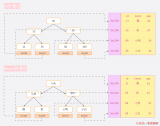
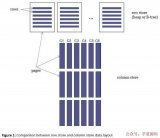
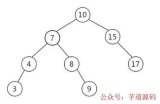
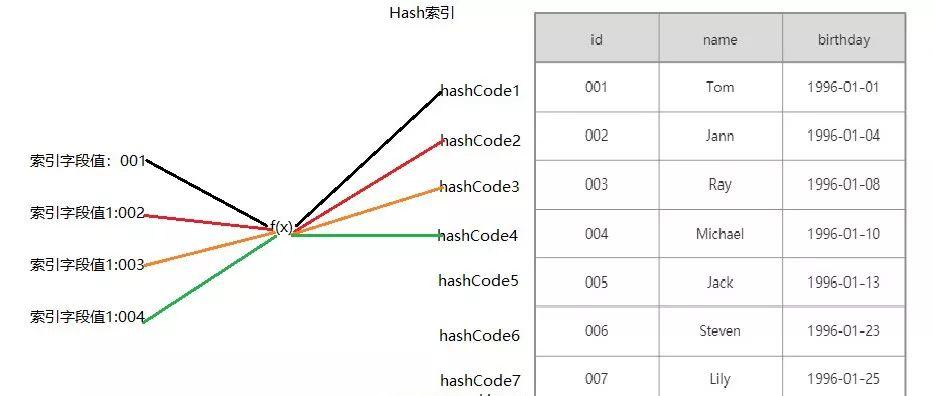
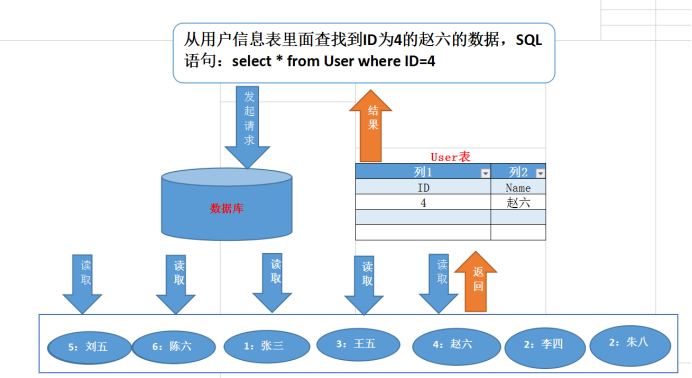










評(píng)論